¿Cuánto dura la batería de un carrito de golf de 36 V?
Al invertir en un carrito de golf de 36 V , uno de los factores más importantes es la vida útil de la batería. Una batería confiable garantiza un rendimiento constante y le ahorra reemplazos y gastos frecuentes. Comprender la duración de la batería de un carrito de golf de 36 V le ayuda a planificar mejor el mantenimiento, los hábitos de carga e incluso las futuras actualizaciones. Esta guía completa cubre todo lo que necesita saber sobre la vida útil, los factores que la afectan y cómo extenderla.
- Factores que afectan la vida útil de la batería del carrito de golf de 36 V
- Vida útil promedio de las baterías de carritos de golf de 36 V
- Consejos de mantenimiento para prolongar la vida útil de la batería del carrito de golf de 36 V
- Señales de rendimiento que indican que la batería de un carrito de golf de 36 V se está agotando
- Costo de reemplazo de baterías de carritos de golf de 36 V
- Batería de carrito de golf de 36 V vs. 48 V: ¿Afecta el voltaje a la vida útil?
- Casos prácticos de la vida real sobre la vida útil de la batería de un carrito de golf de 36 V
- Cómo comprobar el estado de la batería de un carrito de golf de 36 V
- ¿Vale la pena actualizar un carrito de golf de 36 V a uno de 48 V?
- Reflexiones finales sobre la vida útil de la batería de un carrito de golf de 36 V
Factores que afectan la vida útil de la batería del carrito de golf de 36 V
Varias variables influyen en la duración de la batería de un carrito de golf de 36 V. Analicémoslas:
Tipo de batería y química
No todas las baterías de 36 V son iguales. Los tipos más comunes incluyen:
Baterías de plomo-ácido (inundadas o AGM)
Baterías de iones de litio
Las baterías de plomo-ácido suelen durar entre 3 y 5 años con el cuidado adecuado, mientras que las baterías de iones de litio pueden durar entre 8 y 10 años o más. Esta variación en la vida útil se debe a diferencias en la composición química, el peso y la resistencia interna.
Frecuencia de uso
Los usuarios diarios experimentarán una degradación más rápida que los usuarios ocasionales. Sin embargo, el uso irregular con un almacenamiento inadecuado también puede causar daños. La constancia y los ciclos de carga adecuados son importantes.
Terreno y carga
Las cargas más pesadas, los terrenos accidentados y los arranques y paradas frecuentes sobrecargan la batería. Esto puede reducir su vida útil, especialmente en sistemas estándar de carritos de golf de 36 V que no cuentan con frenado regenerativo ni motores de bajo consumo.
Hábitos de carga
Cargar las baterías de forma incorrecta, como dejar que se descarguen por completo o sobrecargarlas, acortará drásticamente su vida útil. Usar el cargador correcto, idealmente cargadores inteligentes diseñados para baterías de carritos de golf de 36 V , marca una diferencia significativa.
>>Vea también Datos esenciales sobre la batería 18650
Vida útil promedio de las baterías de carritos de golf de 36 V
Baterías de plomo-ácido
En las baterías de plomo-ácido, la vida útil se mide comúnmente en ciclos. Un ciclo equivale a una carga y descarga completas.
Plomo-ácido inundado estándar : 500–800 ciclos (~3–5 años)
Baterías de plomo-ácido selladas AGM : 600–1000 ciclos (aproximadamente 4–6 años)
Baterías de iones de litio
Las baterías de litio ofrecen:
2000–5000 ciclos de carga
8–10 años de uso, a menudo más
Esto los hace cada vez más populares en los modelos modernos de carritos de golf de 36 V , especialmente en flotas comerciales y de alquiler.
Consejos de mantenimiento para prolongar la vida útil de la batería del carrito de golf de 36 V
Técnicas de carga adecuadas
Cargar después de cada uso , incluso si es para un viaje corto.
Evite descargas profundas por debajo del 30% de su capacidad.
Utilice un cargador inteligente compatible con su tipo de batería.
Inspección y limpieza periódicas
Revise mensualmente si hay corrosión alrededor de las terminales, abultamientos o fugas. Limpie las terminales con una solución de bicarbonato de sodio y agua y mantenga las conexiones bien apretadas.
Niveles de agua para baterías de plomo-ácido
Mantenga los niveles de electrolitos adecuados. Use agua destilada y nunca la llene en exceso. Rellene siempre la batería después de cargarla para evitar derrames.
Pautas de almacenamiento
Guarde el carrito de golf de 36 V en un lugar fresco y seco. Si lo va a guardar durante un tiempo prolongado, desconecte la batería y conéctela a un cargador de mantenimiento o cárguela manualmente cada 1 o 2 meses.
Señales de rendimiento que indican que una batería se está desgastando
Es fundamental reconocer las señales de que la batería de su carrito de golf de 36 V está llegando al final de su vida útil:
Autonomía de viaje reducida
Aceleración lenta
Necesidad frecuente de recarga
Ruidos inusuales en el compartimento de la batería
Hinchazón o fuga visible
Si experimenta múltiples síntomas, es hora de probar o reemplazar las baterías.
Costo de reemplazo de baterías de carritos de golf de 36 V
Costo de reemplazo de la batería de plomo-ácido
Batería individual de 6 V: $100–$150 (x6 para 36 V)
Costo total: $600–$900 instalado
Costo de reemplazo de la batería de iones de litio
Precio del paquete: $2000–$3000
La vida útil lo hace rentable a largo plazo.
Si bien las baterías de litio requieren una inversión inicial mayor, se amortizan con el tiempo debido a menos reemplazos y una mejor eficiencia energética.
Batería de carrito de golf de 36 V frente a 48 V: ¿El voltaje afecta la vida útil?
Si bien este artículo se centra en las baterías de carritos de golf de 36 V , vale la pena compararlas con los sistemas de 48 V.
Diferencias clave
Sistemas de 36 V : más sencillos, más económicos y adecuados para uso recreativo ligero.
Sistemas de 48 V : mejor torque y eficiencia para terrenos difíciles o montañosos
La vida útil depende más del tipo de batería y su uso que del voltaje. Sin embargo, voltajes más altos pueden reducir la tensión y el calor, lo que indirectamente contribuye a la longevidad.
Casos prácticos de la vida real sobre la vida útil de la batería de un carrito de golf de 36 V
Estudio de caso 1: Usuario recreativo
Uso: Dos veces por semana, terreno llano.
Batería: Plomo-ácido inundado
Vida útil: 5 años
Mantenimiento: Limpieza mensual, carga regular.
Caso práctico 2: Uso comercial (campo de golf)
Uso: Diario con pasajeros, cuestas moderadas.
Batería: AGM
Vida útil: 3,5 años
Mantenimiento: Servicio profesional trimestral
Estudio de caso 3: Conversión de litio
Uso: Uso personal, fin de semana.
Convertido de plomo-ácido a litio
Vida útil (actual): Continúa durante más de 6 años con un 80 % de capacidad restante
Cómo comprobar el estado de la batería de un carrito de golf de 36 V
Utilice un multímetro o un comprobador de carga de batería para evaluar el rendimiento:
Guía paso a paso
Cargue completamente la batería.
Déjalo reposar durante 2 a 4 horas.
Mida el voltaje (el sistema de 36 V debe indicar 38,1 V–38,3 V con carga completa).
Haga funcionar el carrito durante 10 a 15 minutos y vuelva a verificar el voltaje.
Una caída por debajo de 36 V bajo carga ligera indica debilidad.
También puede utilizar un hidrómetro para celdas de plomo-ácido para medir la densidad del electrolito.
>>Vea también Razones para usar un BMS con celdas LiFePO4 y los riesgos de no hacerlo
¿Vale la pena actualizar de 36 V a 48 V?
Si tienes problemas frecuentes con la batería o deseas un mejor rendimiento, podría valer la pena considerar actualizarla. Sin embargo, esto también requerirá cambios en:
Motor
Controlador
Cargador
Posiblemente el mazo de cables
Aun así, para muchos usuarios ocasionales, un carrito de golf de 36 V bien mantenido sigue siendo eficiente y rentable.
Hay algunas preguntas frecuentes:
¿Puedo mezclar baterías viejas y nuevas en un carrito de golf de 36 V?
No. Mezclar baterías viejas y nuevas provoca un desequilibrio en la carga, lo que reduce la vida útil de la batería nueva.
¿Cuánto tiempo debe durar una sola carga?
Con una batería en buen estado, un carrito de golf de 36 V normalmente puede recorrer entre 15 y 25 millas con una carga completa, dependiendo del terreno y la carga.
¿Cuál es el rango de temperatura ideal para el almacenamiento de la batería?
Almacenar entre 10 °C y 25 °C (50 °F y 77 °F) . Las temperaturas extremas reducen la eficiencia y la vida útil de la batería.
Reflexiones finales sobre la vida útil de la batería de un carrito de golf de 36 V
En resumen, la vida útil de una batería de carrito de golf de 36 V depende de varios factores: tipo de batería, hábitos de uso, mantenimiento y condiciones ambientales. Las baterías de plomo-ácido suelen durar de 3 a 5 años, mientras que las de iones de litio pueden superar con creces los 8 años. Con el cuidado adecuado, inspecciones regulares y prácticas de carga inteligentes, puede maximizar la rentabilidad de su inversión en baterías y disfrutar del rendimiento ininterrumpido de su carrito de golf de 36 V.
Ya sea que sea un conductor ocasional o un operador comercial, comprender estos conceptos básicos sobre la batería le garantizará aprovechar al máximo su vehículo eléctrico.

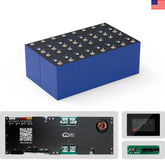



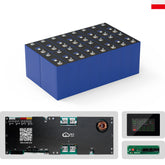

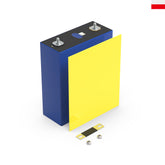

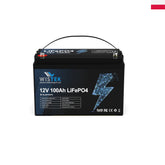
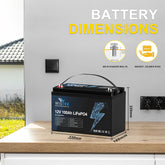


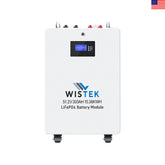
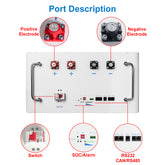
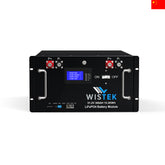
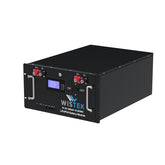


Leave a comment
All blog comments are checked prior to publishing